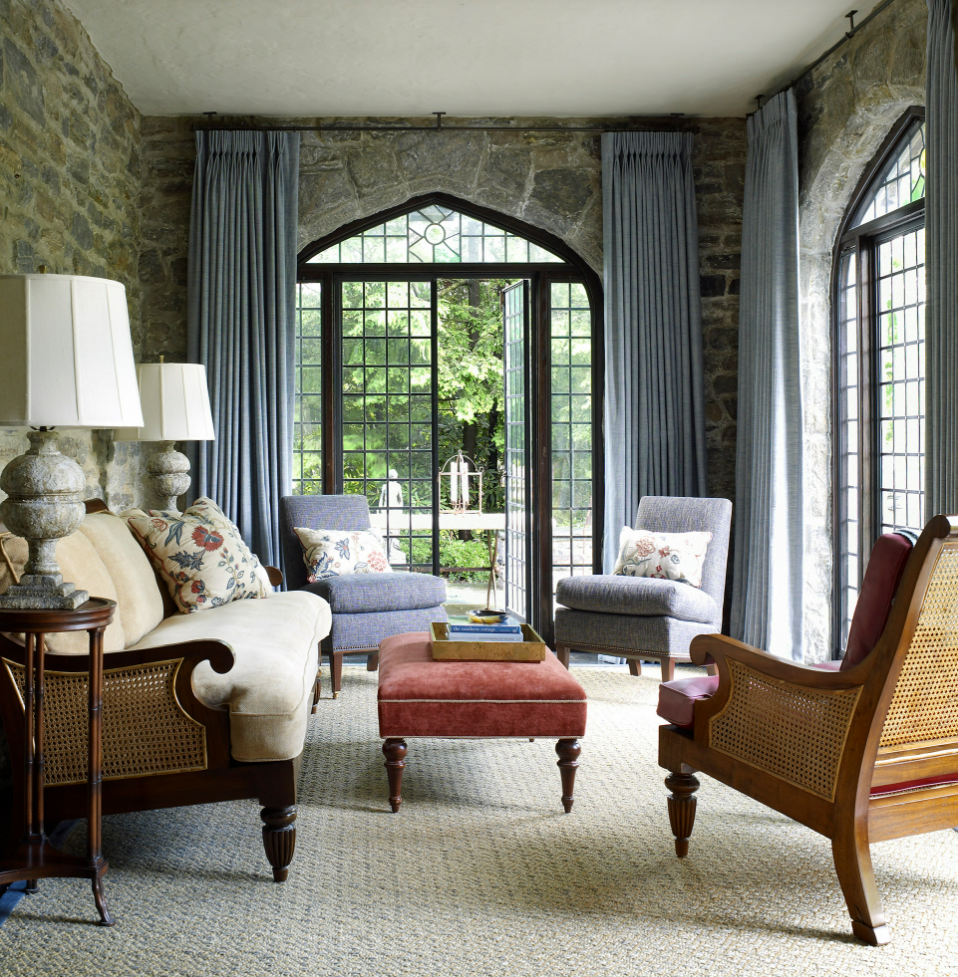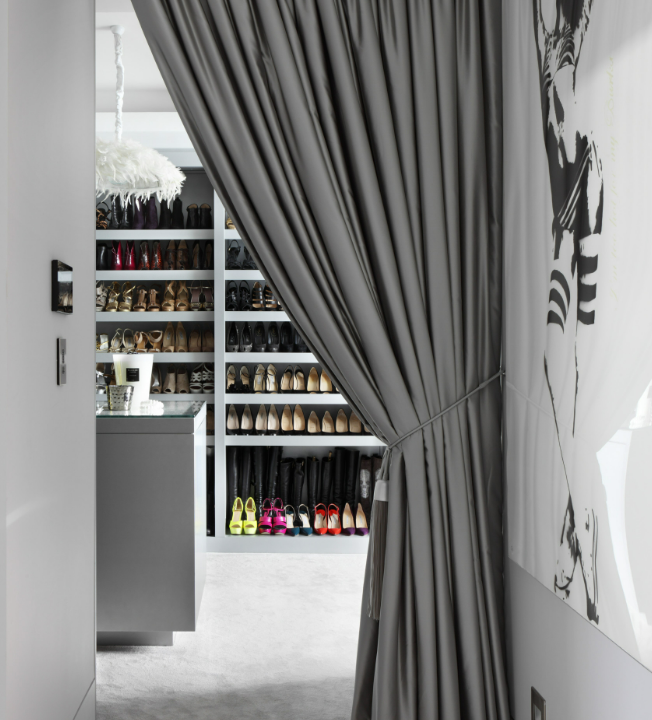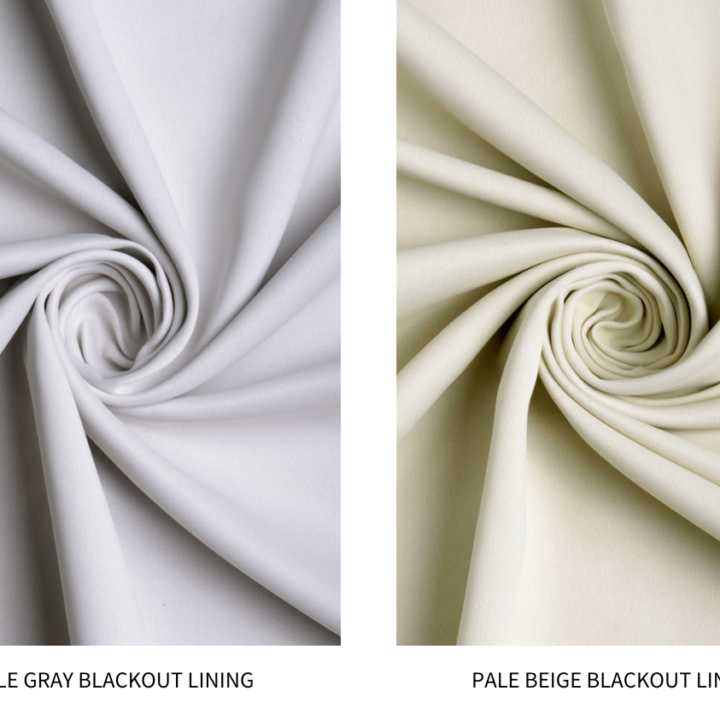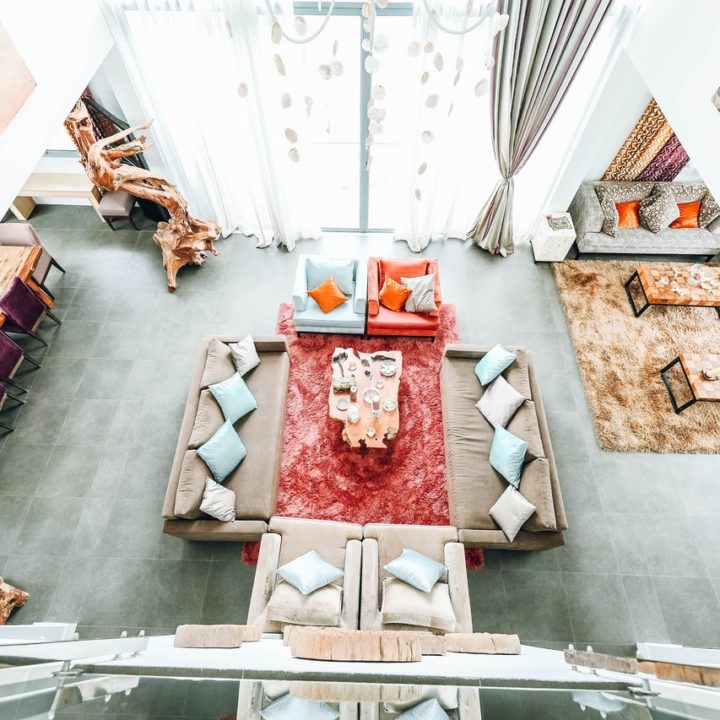Spiffy Speak
WINDOW TREATMENTS FOR FRENCH DOORS: IDEAS, PHOTOS & TIPS

With glass panels integrated into the wooden frames, French doors provide protection and segregation while still maintaining your visual connection with the other side. They are whimsically elegant and practically efficient solutions for spaces that want to benefit from the flooding of light.
Although showstoppers by themselves, dressing up French doors can step up their charm and functional versatility. But easy as it may seem, dressing these oversized doors without compromising their original character and distinctive capabilities can be challenging. Hence, we present you our top suggestions for window treatments for French doors so you can make a well-informed choice for yours.
Dressing French doors is easy with Spiffy Spools. Order custom curtains, roman shades & valances in any size, with over 3,000 fabrics and patterns to choose from!
Top Concerns to be Addressed with French Door Window Treatments
An architectural gem of France’s Renaissance movement, French doors found instant appreciation because of their ability to filter light into the home. These ‘portes-fenêtres’ or ‘window doors’ installed on the external walls revolutionized the interior design of the times as they stepped up the visual appeal of the homes from ‘dark and stuffy’ to ‘bright and airy’.
Later, this statement millwork also started getting featured as room dividers. Whether as external or internal doors, French doors were originally intended to provide segregation while drawing light in and making the room feel more spacious and open.
If you have French doors on your patio, bedroom or living room, they are surely the focal point around which you would decorate. If you’re blessed with a beautiful landscape around, these doors let you savor those views constantly, and make your interiors bright. Even the shadows they cast are so dramatic. And unlike sliding glass doors that take a panel’s space for stacking, French doors clear off the entire space for air passage, and even though double paneled, they do not let even a mullion cheat you off the incredible views.
So, celebrate this stunning treasure with suitable and elegant window treatments. When thinking of window treatments for French doors, there are a few aspects to be considered with care so you can get the right ones. And here are the top factors you must spend some time addressing:
- ASK WHY: Begin by asking yourself what is driving you to take this step. Is it to make the space more private or to cut the sun glare on the TV or just to add a touch of pizzazz? Once you answer this question, you’ll know whether to go for a highly functional window treatment or a decorative one that simply furthers your aesthetic vision.
- KNOW THE ROOM’S PURPOSE: Account for the purpose of the room. Do you need to darken and quieten the room for a better media experience or good sleep? Or, is it a family room where you want your time together without piquing a nosy neighbor’s curiosity? Or, is it a reading nook or homework station that you’re trying to make distraction-free by cutting off visual connection with the other side of the door?
- ASK WHERE: Also, give due consideration to where your French doors are situated. Are they on the external walls opening to a deck or are they your patio doors or are they dividers between two rooms? If they are room dividers, you must also consider how the window treatments appear in their rear view. Even if it is not as attractive as the front view, it should at least not have too much hardware showing at the back. And it should go well with the decor of the other side.
- MAKE SPACE: Since the doors are oversized, the large passageway that they have at their disposal must be factored in. The window treatments must not in any way infringe on that space so as to make it unsafe or inconvenient to access.
- BE CAREFUL WITH DOOR-MOUNTED TREATMENTS: If you’re looking for door-mounted treatments, check whether they’ll interfere with the handles. It is important that they clear off the handle or sit neatly tucked away behind the handles for a fuss-free operation of the door.
- USE SPACER BLOCKS/ PROJECTION BRACKETS: The beveled trims framing the glass panels can pose a concern for door-mounted treatments. This issue can be sorted by using spacer blocks or projection brackets and have to be factored in when taking measurements.
- CHECK STACKING PLACE: If you’re going for wall-mounted window treatments, check whether you have sufficient wall space on the sides and the top before you start browsing the various options. If you don’t have sufficient space on the sides, drapes, and panel stacks will partially cover the doors when stacked back. Similarly, if you don’t have space above the doors, mounting the shades or blinds inside may become your only option, and it may take away some space from the doors.
- FACTOR IN INSULATION: The glass panes are both boon and a bane. With overwhelming views across, they are boons, of course, but when the winters set in, they release thermal energy easily from the room. This increases the workload on the heaters. This aspect is a special concern if your French doors are placed on the external walls of a bedroom or nursery. If that sounds like your home, you might want to consider insulation-efficient window treatments to take off some of the load from your overworked heaters.
- ENSURE FULL CLEARANCE OF THE DOORS: Factor in if your French doors swing both sides or just inwards/outwards. If they swing open on both sides and you want to be able to operate them in both directions, you need to be careful with the selection of window treatments. For, whether they will stack on the top or the sides, they must clear off fully whenever you intend to open the doors either way.
- SYNC WITH OVERALL DECOR: Whether highly functional or decorative, your French door window treatments must vouch for your decor style and the overall theme of the space it adorns. The palette, structure, making, layering, style, pattern and texture should all tally with the design story of the room.
When you have gone through these important considerations, you’ll already have a vague idea about the suitable window treatments for French doors. So, let’s take you through the various options – their pros and cons – so that you can make your decision with more confidence.
Top Window Treatment Options for French Doors
Whether you have a traditional, coastal, or farmhouse-styled home or a modern bungalow or condo, French doors need treatments that add to their glory while being elegant in themselves. And the functional ease must be top-notch so that you can operate both the doors and the treatments with minimum effort.
Generally, window treatments that stack on the sides are preferred for doors – over those that stack on the top – for their ease of access and operation. But depending on whether the availability of wall space for the stacking room is on the side or the top, you may choose between side-stacking and top-stacking window treatments.
Also consider other factors such as whether the doors swing both ways, whether the treatments need to be protected from kids and pets, whether you want the stacks to soften the window trims or dress the top like a valance, and so on. And, make sure whether you choose top-stacking or side-stacking treatments, they gel with your decor style perfectly.
On our list of recommendations, we have a mix of top-stacking and side-stacking options that range from traditional to modern so you have plenty of options to consider here. Have a good read to learn more.
Curtains and Drapes
The most classic of all window dressings – curtains and drapes – top our list because they stand up to the grandeur of your lovely French doors. The smooth ripples, the flowing trails, and the billowing swags are exactly the kind of dressings this sightly entry point merits.
If your French doors open both ways, drapes are a great option because when stacked to the sides, they clear off the opening completely, giving free reign to light and fresh air. And the oversized scales of the treatment pose no issue for the hardware too.
Drapes insulate the room so well when closed, leaving no gaps for light or cold drafts to sneak in. With a thick face fabric, right heading style, sumptuous fullness, and blackout lining, drapes can make your French doors almost as functional as solid wood doors as regards the retention of thermal energy. The option to add blackout lining also makes it ideal for bedrooms, nurseries, and media rooms for more efficient room darkening and sound absorption.
Besides, no matter what palette or design style you follow, you’ll not have to work your fingers to the bone to find suitably designed drapes. With endless options for fabrics, colors, patterns, textures, and curtain styles, you’ll be spoilt for choice, to say the least. Where most non-fabric and machine-made treatments can bring only neutral hues to the home, drapes promise more diverse palettes and finishes.
Curtains can also go a ruffles-free way by being mounted onto the doors on sash rods. With very minimal use of fabric, double rod pocket curtains get neatly tucked away behind the handles providing fuss-free operation and just enough coverage. Since the doors are not behind curtains, they are easily accessible, so when you want to open them, you are saved from a chore as you don’t have to first stack up the curtains on the sides.
If you’re looking only for a decorative touch, opt for stationary curtain panels. They are typically narrow, single panels and offer no coverage, but can frame your French doors and meet your aesthetic vision without overdoing the good thing.
READ MORE: FRENCH DOOR CURTAIN IDEAS
Cellular Shades
Next on the list is a modern treatment called honeycomb shades or cellular shades. They are double-layered shades that look like honeycomb cells from the side view. They trap air within these cells providing higher insulative capacity than most other machine-made shades and blinds. Alternatively, they are also available in sheer material for light-filtering and blackout material for total light blocking.
In case you want to install them on the doors, their sleek profiles and svelte headrails come in handy. They also have magnet stoppers at the bottom so that the shades stay tightly hugging the doors even as you operate them.
What makes cellular shades most thrilling is their top-down/bottom-up feature. The shades are cordless and can be opened either at the top or the bottom or both. So, if you want to open the shades you don’t have to bend down to grasp the bottom, making it functionally more convenient.
If you want it still more convenient for use, you can install vertical cellular shades. These shades make a very neat and slim stack when closed fully, letting you make the most of the doors, especially when you lack wall space on the sides.
While cellular shades are extremely functional, what is disappointing about them is their limited aesthetic potential. They mostly feature neutral hues for easy blendability into the decor, but this very minimal finish often fails to rhyme with more color-driven and heavily detailed decor styles. The accordion-style folds offer a pattern, though, and that is the most that can be said about their aesthetic richness.
Roman Shades
If you love the idea of blinds that cling to the door but wish they also carried some oomph, we suggest roman shades for your French doors. They can be designed in any color, texture, pattern, and style that you wish, and also appear custom-made because of their tight-fitting dimensions.
With the aesthetic diversity of drapes, but with more structure, roman shades marry the elegance of drapery with the functionality of blinds. They make the wall and floor space free – quite the solution you may be looking for if your architecture does not quite cooperate with heavy drapery’s stacking room requirements.
Roman shades look more soft and luxurious than machine-made blinds. If you appreciate designer window dressings produced through dexterous craftsmanship and human labor above industrially produced cookie-cutter solutions, roman shades are ‘the best’ options after curtains and drapes.
Like drapes, roman shades can also be designed in sheer fabrics to let in more light or lined with blackout fabrics for room-darkening and greater insulation. They also come in various styles so that you can find one that suits your decor style very easily.
There are three ways to mount roman shades on French doors. The first and most recommended option is to mount the shades on the wall above the doors. This way, their stacking room will be accommodated on the wall, making the doorway completely clear for light and air to gush in.
The second option is inside mounting the shade – that is, mount the shades on the door’s frame to fit neatly into the recess. This option, though sleeker and more minimalist, will take away some space from the doors for the stacking room.
Both these options have one flaw to them that is common to all top-mounting window solutions. When you need to pass through the doors, you need to first draw the shades up and clear the way for you. The solution is to install multiple shades and keep one of them open for access while others can be shut down for light control. But, if you need to keep all the shades down most of the time and the doors will be accessed frequently, both these mounting options may not work well for you.
That’s where the third option looks more tempting – to mount the shades to the doors. The whole chore is cut down to just operating the doors when you need to access them. However, do account for the fact that even if you fix the roman shades at the edge of the doors, their stacks may slightly overlap the top glass panes.
When thinking of roman shades for French doors, also account that their hardware at the back is visible to the other side. This is not an issue if they are on the external walls but can look unseemly if the doors are internal room dividers.
READ MORE: ROMAN SHADES FOR FRENCH DOORS
Roller Shades
Now, if you love the idea of color-packed shades but would mind their folded stack (typically 8-12 inches) taking up room on your wall or door, consider roller shades. Since they roll up into very sleek cassettes, they don’t take up any space from the doorway if you mount them to the wall or from the glass panes if you mount them to the doors. Roller shades are also a better option for French doors that divide two rooms because their seamless back would be relatively elegant to view from the other side.
Though not as extensive as fabric roman shades, roller shades come in a variety of materials, colors, and patterns so you can find one that blends with your color palette and decor style easily. They are also available in various types to suit various needs – sheer shades for light-filtering, blackout shades for room darkening, banded shades to offer both these features at once, solar shades to cut off UV rays, and so on. You can opt for the type that perfectly suits your specific needs.
Whether you should mount the roller shades to the door trim or the wall above depends on whether your doors operate both ways. Compare the depth of the cassette with that of the door trim and you’ll find the answer.
While roller shades have impressive functional qualities and svelte profile, what makes them less aesthetically pleasing to some is that very trait. Homeowners who are looking to design their French doors with hyggelig dressings might not be very elated with the flat, overly streamlined surface of the roller shades. That minimal, industrial look certainly falls out of place with traditional decor unless complemented by valances or drapes to add softness, volume, and a decorative touch.
Also, note that although roller shades eliminate the need for a stacking room, they share the flaw of all top-mounted window treatments that they block the way when they are in use. So, you’ll have to pull up the shades before passing through the doors or use multiple shades and keep one open for accessing the door. This is especially relevant if your French door swings inwards.
Faux Shades and Valances
If you’re drawn to the idea of adding a decorative layer above your drapes or blinds or going solo with non-functional aesthetically pleasing dressings, faux shades, and valances offer just that. Typically spanning up to a fourth of the door, these lovely accessories can be mounted to the ceiling of the door or the wall above it.
When mounting the valance above the doors, you add to the vertical dimension and elongate the doors visually. But, if you mount it within the recess, and your doors swing both ways, the valance will come in the way when you try to open the doors inward. Mounting above the doors is a better idea for efficiency and also helps to add a visual sense of height to the space.
Valances uphold the primary purpose of French doors – to let light in and to cherish the connection with the outdoor environment, which is an added perk if you have a French patio door. They add just the right amount of color and texture that is needed to step up the visual appeal of your decor.
Since they offer no coverage, they work best as a standalone treatment for rooms that don’t need to ensure privacy and light control. Bedrooms and living rooms with media units call for fully functional primary window treatments where valances can add an over-layer of color, pattern, or texture.
Valances come in various styles ranging from minimalist to maximalist and can be designed in any drapery fabric of your choice. If you love the idea of decorative window toppings but wouldn’t go as far as opting for valances, you can go for a more modern look with faux roman shades. They come across as fully functional shades although they are stationary panels and do everything that valances do.
SHOP NOW: CUSTOM WINDOW VALANCES & SWAGS FROM SPIFFY SPOOLS
Woven Wood Shades
If you want a non-fabric treatment for your French doors, we also highly recommend considering woven wooden shades. They are usually made of rattan, jute, grass, or bamboo reeds and are great options for adding textural variety to the space. Especially if your French doors overlook a lush garden, the organic style and the earth tones of these blinds can tie in easily with the views.
Woven shades provide privacy and filter in ample light as well through their striated weave. They are dust and soil-resistant and call for minimal maintenance. They are also a satisfying combination of rustic elegance and modern luxury, finding an appropriate place in both country-styled and transitional decor styles.
Factor in their limited palette, though, because you’ll have to work in the wood tones into the rest of your design for cohesiveness. If you have wood floors, solid wood furniture, or seaweed baskets to echo these tones, the job is easy.
That said, it is not always easy to make them blend into the space as if they belong there. Especially, if your home is designed with a very polished modern aesthetic vision wherein natural wood finishes look out of place, this option may be better overlooked.
But if you’re lucky with the overall design statement, still spare a moment to ponder on their compatibility with the climatic conditions of your locality. Woven wooden blinds can be a tad bothersome as they can get moldy in humid locales if not cleaned in the right way and at regular intervals. If you can foresee this happening in your place, consider other options such as faux wood blinds or plantation shutters.
Also, factor in the disadvantage that top-mounted window treatments have with doors. They have to be cleared first to be able to access any inward-swinging doors for passage. It’s not a problem if you can mount multiple shades and leave one open for access when you need to use the doors often.
Plantation Shutters
If you like the idea of louvered windows and are looking to add window treatments that will also give a facelift to the facade, adding to the architectural beauty of French doors, there’s no looking further than plantation shutters. These are structural renovations with high returns that positively impact your home’s resale value while also adding to the aesthetic appeal.
They can be mounted to the doors with wooden frames that facilitate a slight projection from the glass pane. This added space gives room for the shutter’s slats to swivel, offering versatile control over the way you want the light to stream in. You can position the slats according to the direction of the sunlight or as per the level of privacy you wish to achieve.
In a period home, beach house, or country-style decor, plantation shutters find their rightful place. Both French doors and their plantation shutters designed in pure white are very typical of traditional homes. And equally, they fail to sync with the streamlining of more modern settings.
The downside to this window dressing is that they block the views in a massive way. If you wish to have the views, you’ll have to let go of all the privacy and light control options by opening them completely.
Besides, you need to spend a substantial fortune to get these shutters to cover such a massive opening as French doors. If it’s a rental and not even your ‘forever home’, this option is not worth the huge deal.
Yet, if your heart is set on louvered window treatments, thankfully there are other options for you to consider like venetian blinds that are not as overbearing.
Order Custom Window Treatments for French Doors from Spiffy Spools
We hope you now have sufficient information on the various types of treatments available for French doors and how they fare in offering both functional ease and aesthetic richness. If your heart is set on fabric window dressings, Spiffy Spools will be proud and happy to partner with you on your decor project. Do browse our collection and blogs for inspiration and ideas!
READ MORE: ROMAN SHADES FOR DOORS












